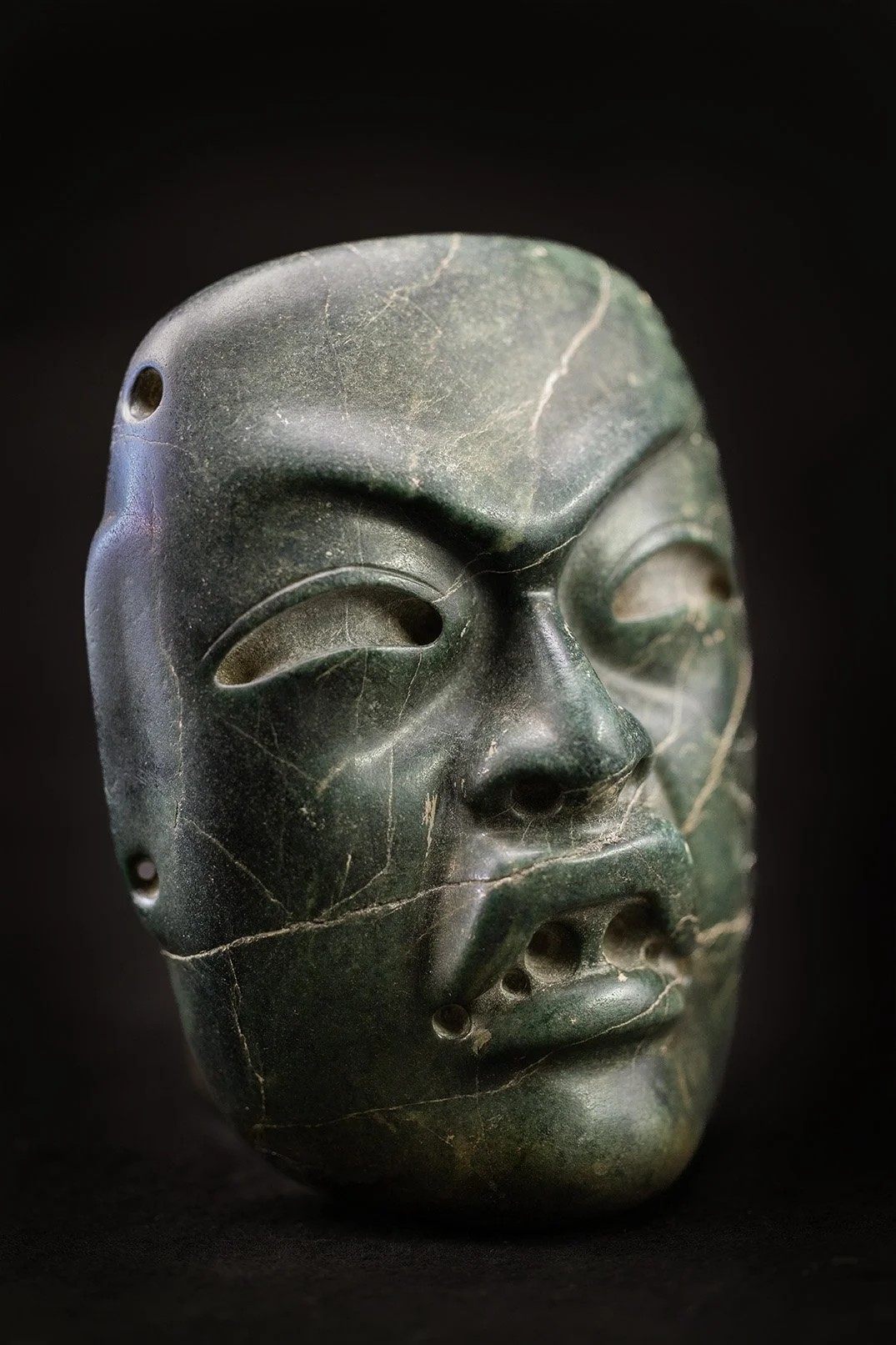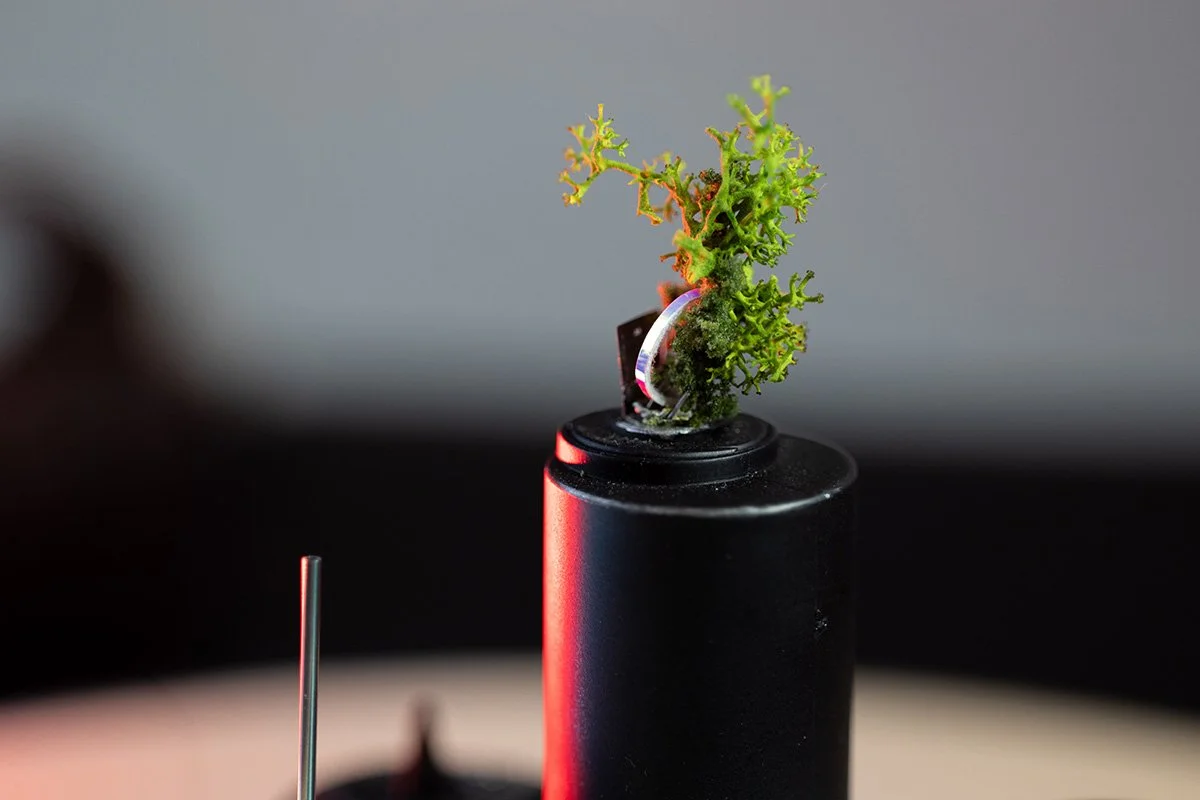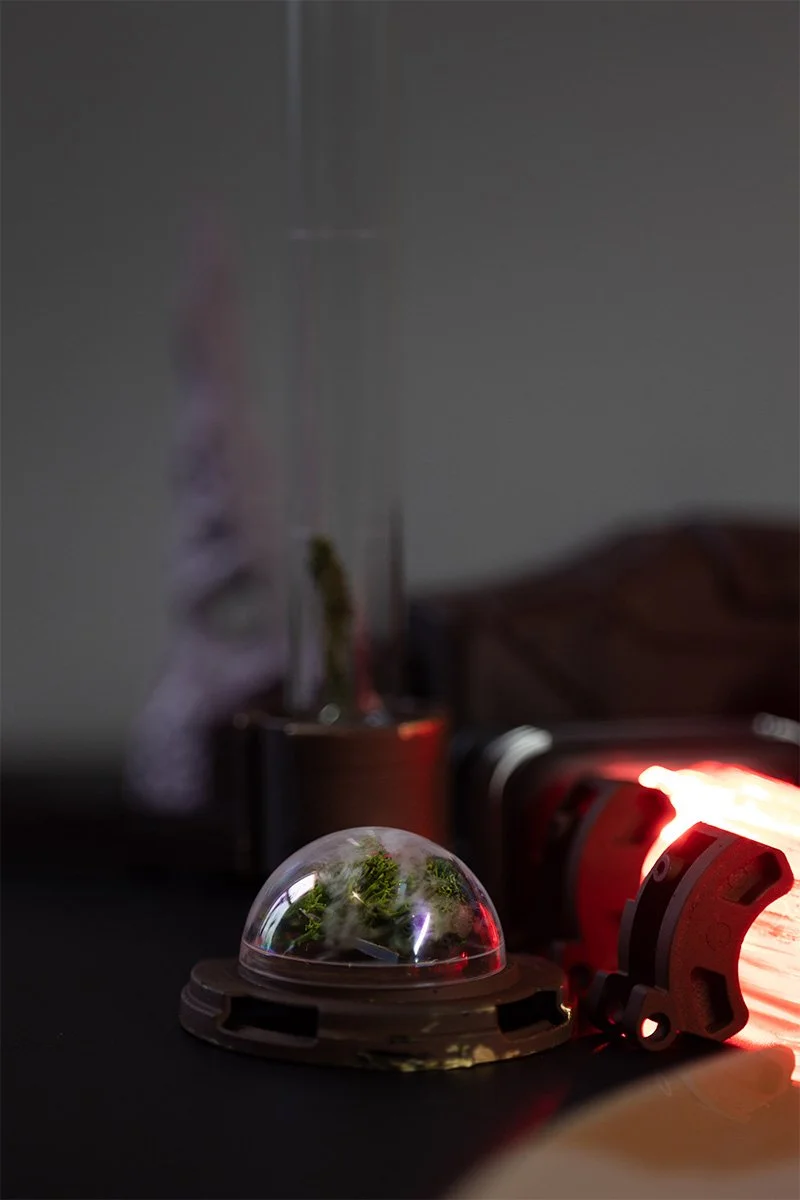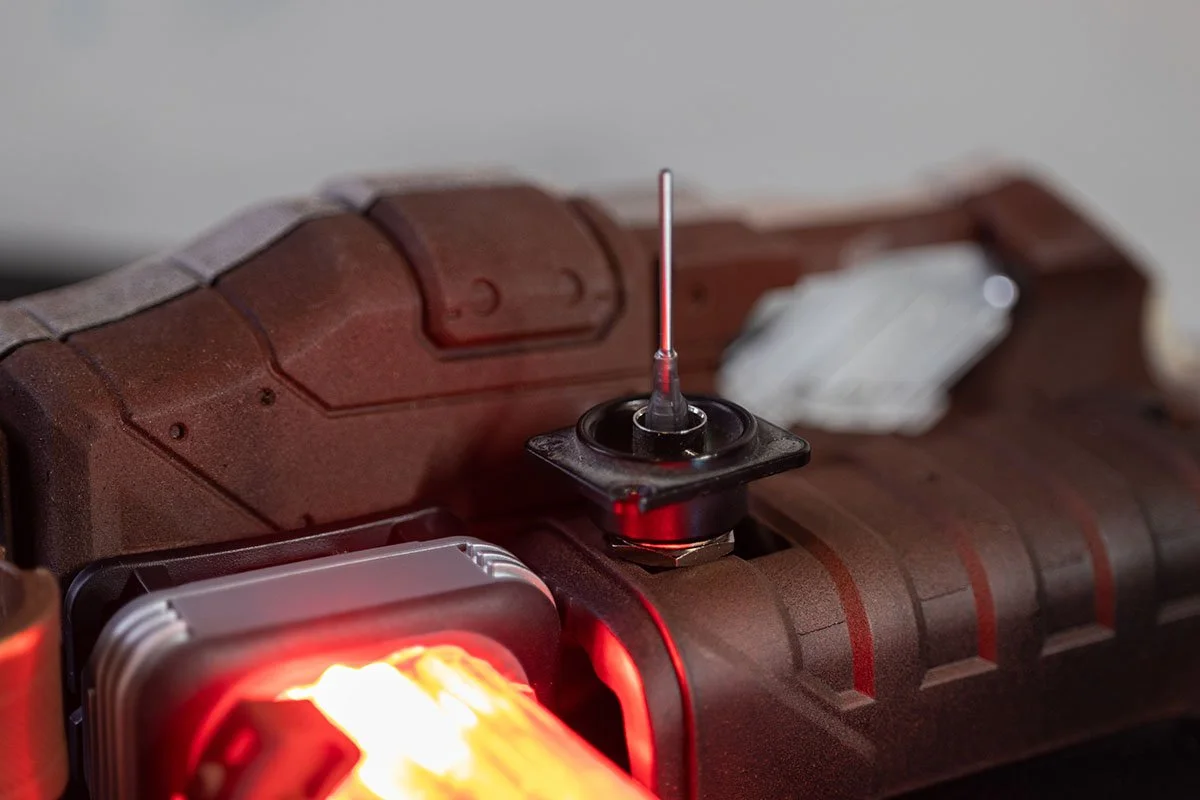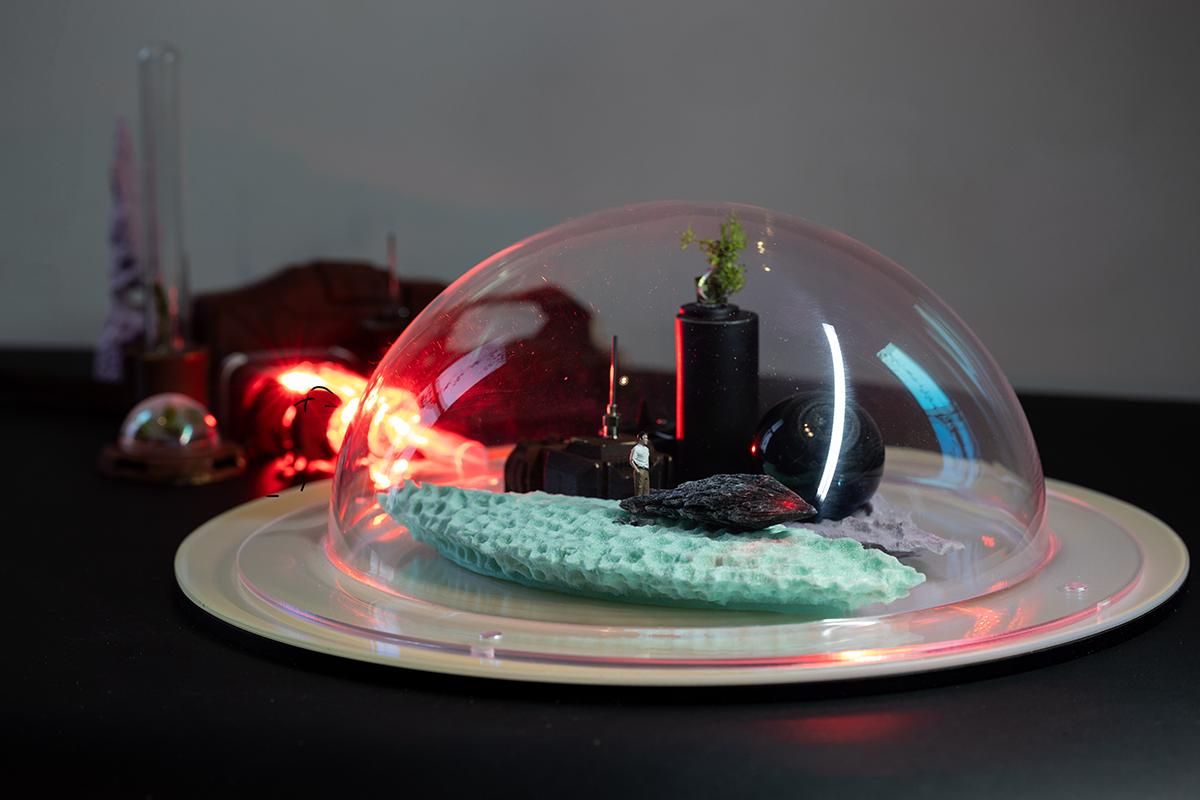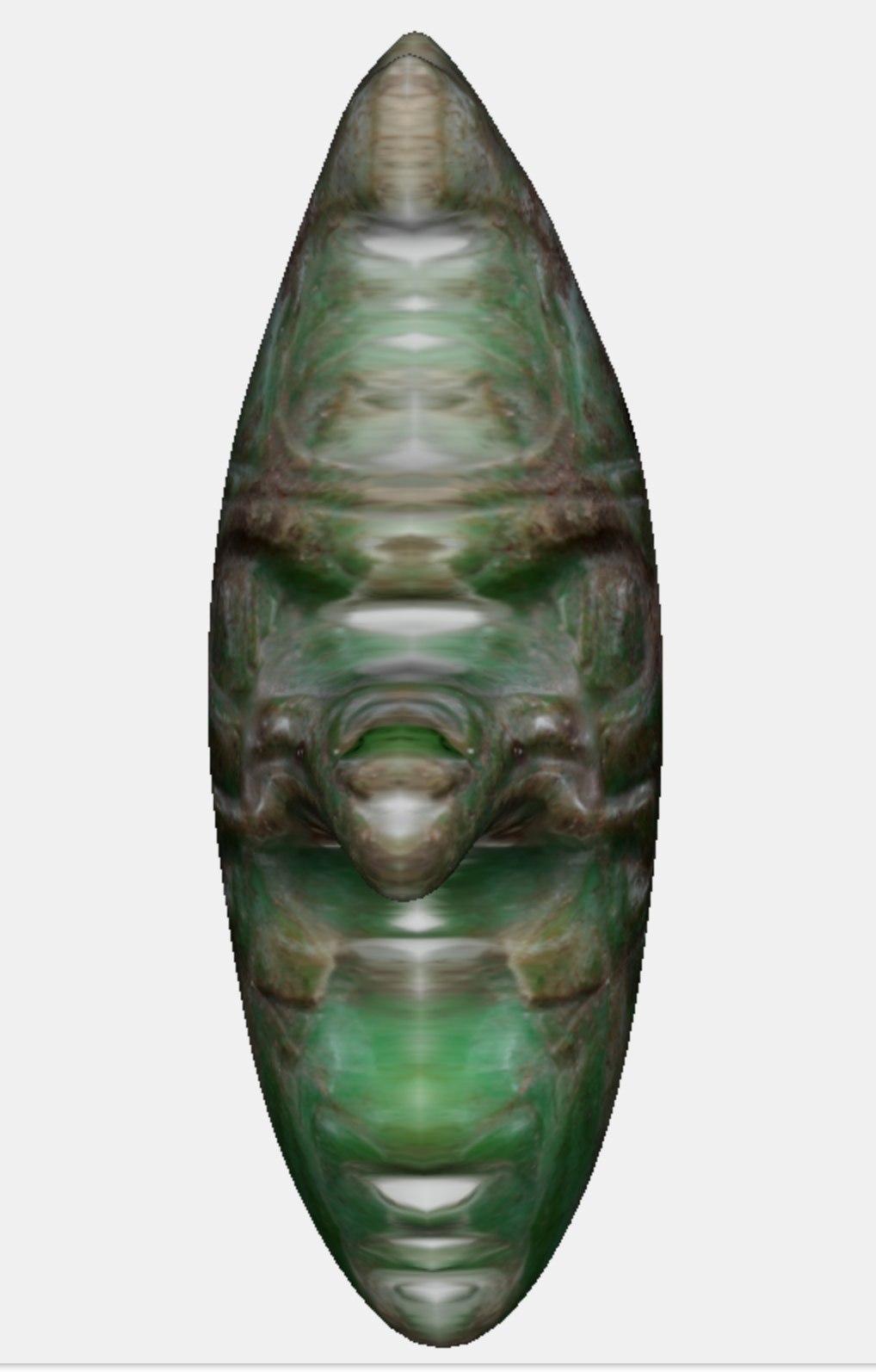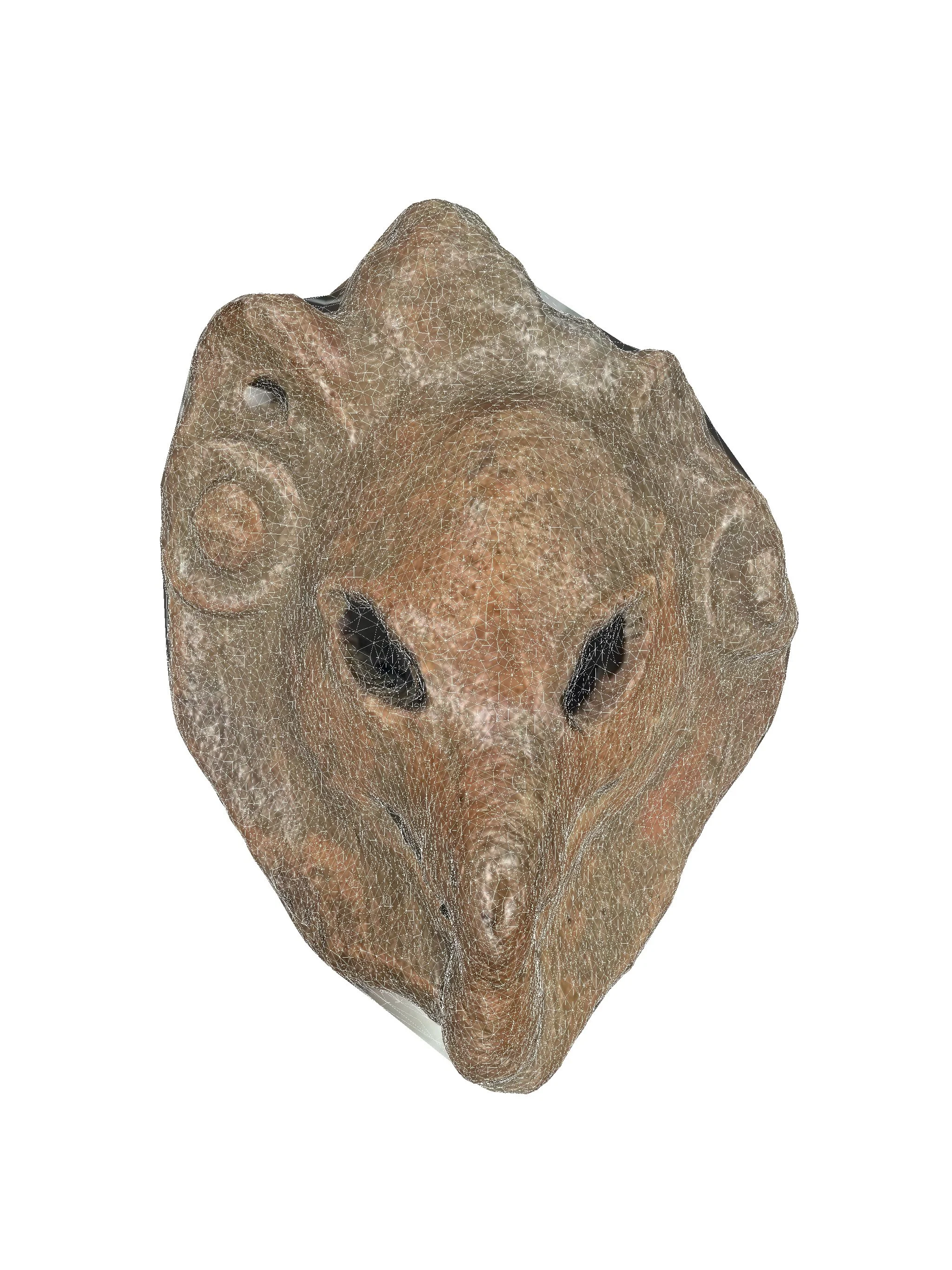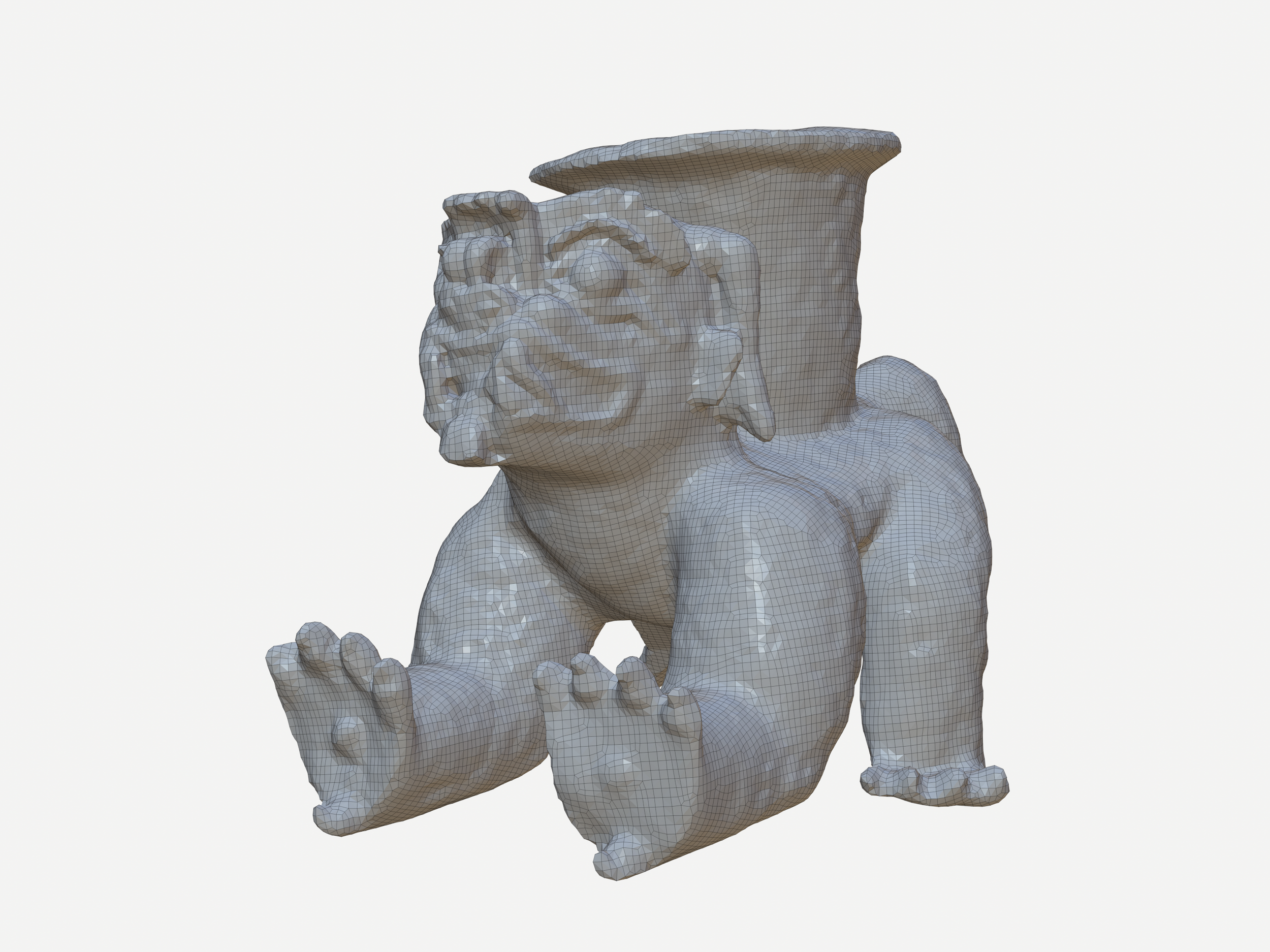Archaeological Debris:
Statement
I am a native of a region that, in precolonial times, was inhabited by the Náhuat-Pipil, Lenca, and Kakawira people. They were connected to the Maya civilization in different ways, which was influenced at the same time by the Olmec cosmogony (1600 – 400 B.C.), an undeniable testament to the cultural richness of our region.
Unfortunately, colonization dictatorships, subsequent commercial influence, and post-colonialism have eroded our ancestral culture. This is reflected in the loss of our native languages or leaving them up to extinction and adopting Spanish and English as our actual forms of communication and cosmogony under occidental philosophies or religions.
My research focuses on a juxtaposition of timeframes from ancestral culture and its relationship with the natural environment to our present, marked by technological advances and the exploitation of natural resources and ecosystems.
Through various technologies, I aim to create new ways of representing the identity of people like me in the present time to develop new ways of documenting contemporary memories. In this way, my objective is to emphasize the value of memories that have been diluting and transforming since colonial times.
I’ll constantly refer to The Mesoamerican culture as my route, considering the most crucial part of who we are as a region and looking back to pre-colonial times.
I’m currently dedicated to scanning ceramic artifacts, some of which have been considered "archaeological trash" due to their limited archaeological value. I aim to give them a place in the virtual digital world and, simultaneously, in the real world through various means. In some cases (and because the artifacts are incomplete), I allow AI technologies to fill the missing gaps; I’ll re-print some artifacts in clay and plastic; in my opinion, it creates a literal reflection of our current identities. My work process will be traditionally documented using various media. I’ll be constantly searching for external support like residencies or grants, believing these opportunities could benefit my project since I would have the chance to meet other specialists and interact with them, which will provide a chance to go in-depth into my research.
I hope to continue and expand my research to emphasize the importance of preserving the cultural heritage of my region and present the content in complex and culturally diverse like New York, where I have lived for the last six years, as an aim to give my culture a similar value other civilizations have like the Romans, Egyptians, or Asian cultures, innovatively using technology to connect the past and the present under aesthetics younger generations feel connected to.
As a background of this project, I have curated and co-created with another collaborator artist under the name Mantenerse Humano, which focuses on three crucial topics :
Extinction and new interplanetary territories presented in the shows: Intergalactix: against isolation hosted by Los Angeles Contemporary Exhibitions - LACE- May-Aug 2021; Mantenerse Humano, hosted by Museo de Arte de El Salvador -MARTE- Feb-Apr 2023; Celestial Spaces Reflecting Terrestrial Space hosted by Soil Factory Residency Ithaca New York Jul-Aug 2023.
A curated selection of work will be presented in 2025-2026
Pivotal production components:
First, Establish an Ephemeral Museum that hosts archaeological pieces primarily associated with Mesoamerican culture, emphasizing Olmec and the Mayan aspects the most.
To achieve this, I will draw from two sources: Artifacts found, collected, or obtained through auctions, currently totaling over 150 pieces. These artifacts will be showcased online, with a video map projected, 3D printed, and presented through various media determined in collaboration with individuals, institutions, or collaborators in specific site areas, when possible, in archeological sites whenever we have the proper permits and respect for the culture. Most of my pieces are integral to larger structures crafted from rock, obsidian, or clay.
I recently initiated the process of 3D scanning them using the lidar on my phone, and I plan to transition to Revopoint 3D scanners.
Additionally, during my regular museum visits, I utilize my lidar to capture data from pieces currently housed in institutions like The Metropolitan Museum in New York. Leveraging AI, I aim to recreate or "complete" these artifacts, compensating for any missing parts using AI tools. I plan on reproducing them over time by 3D printing and, when possible, creating site-specific video map projections.
Second: site-specific sculptures and dioramas, mini sculptures and 3D-printed masks, traditional media drawing, paintings, and photography.
Depending on the budget capacity, I am contemplating creating multimedia pieces to attend to the specific needs of each section, extending production times and separating them for individual solo shows for the next three to five years.
Interest guides:
Post Humans
This is a personal exploration derived from stage one of the project Mantenerse Humano (quote from George Orwell’s novel 1984), about a future where humanity transcends its biological confines through advanced technologies such as genetics, artificial intelligence, and nanotechnology. My work reflects the tension between the promise of greater longevity, intelligence, and physical abilities and the profound ethical dilemmas these advancements provoke. I propose examining the delicate balance between innovation and identity through dioramas, highlighting the risks of inequality, technological dependence, and the potential erosion of our fundamental human essence. By addressing the term "posthumans," I seek to initiate a dialogue about the evolutionary nature of humanity and our collective future, drawing inspiration from the speculative visions of science fiction.
Posthumanos
Consiste en una exploración personal derivada de la etapa uno del proyecto Mantenerse Humano (citando a George Orwell y su novela 1984) sobre un futuro donde la humanidad trasciende sus confines biológicos mediante tecnologías avanzadas como la genética, la inteligencia artificial y la nanotecnología. Mi trabajo refleja la tensión entre la promesa de una mayor longevidad, inteligencia y habilidades físicas, y los profundos dilemas éticos que estos avances suscitan. A través de dioramas, planteo la necesidad de examinar el delicado equilibrio entre la innovación y la identidad, destacando los riesgos de desigualdad, dependencia tecnológica y la posible erosión de nuestra esencia humana fundamental. Al plantear el término "posthumanos" busco un diálogo sobre la naturaleza evolutiva de la humanidad y nuestro futuro colectivo, inspirándome en las visiones especulativas de la ciencia ficción.
Plastic Flints
In the Anthropocene, the remnants we leave behind contrast with those of ancient civilizations. Our contemporary legacy is marked by synthetic materials like expanded polystyrene (EPS or Styrofoam), which are replacing ceramics, jade, and marble. Styrofoam is lightweight and moisture-resistant, used in insulation, packaging, and food service, but it takes over 500 years to decompose and break into harmful microplastics. Unlike ancient artifacts that biodegrade or endure gracefully, Styrofoam persists, reflecting a society oriented towards disposability. Recycling systems struggle to manage it, causing environmental contamination. This shift from durable materials to disposable plastics highlights a preference for convenience over sustainability.
Pedernales de plástico
En el Antropoceno, los restos que dejamos contrastan con los de las civilizaciones antiguas. Nuestro legado contemporáneo está marcado por materiales sintéticos como el poliestireno expandido (EPS o Styrofoam), que están reemplazando a la cerámica, el jade y el mármol tradicionales de las represenciones cosmogonicas de distintas civilizaciones.
El Styrofoam es un material ligero y resistente a la humedad, utilizado en aislamiento, embalaje y servicio de alimentos, pero tarda más de 500 años en descomponerse y se convierte en microplásticos dañinos. A diferencia de los artefactos antiguos que se biodegradan o perduran con gracia, el Styrofoam persiste, reflejando una sociedad orientada hacia la desechabilidad. Los sistemas de reciclaje luchan por gestionarlo, causando contaminación ambiental. Este cambio de materiales duraderos a plásticos desechables destaca una preferencia por la conveniencia sobre la sostenibilidad.
Ancient Echoes
Captures the essence of 3D renders of ceramic fragments from pre-colonial civilizations in El Salvador. These delicate remnants, though incomplete, provide invaluable insights into the lives and cultures of the ancient peoples who once thrived in this region. Each fragment's unique form whispers stories of long-lost traditions, artistry, and daily life. Through the lens of "Ancient Echoes," we bridge the gap between the past and present, piecing together the richness of history one shard at a time and preserving the legacy of these early civilizations for future generations to explore, maybe understand better, and appreciate.
Ecos ancestrales
Captura la esencia de los renders 3D de fragmentos de cerámica de las civilizaciones precolombinas en El Salvador. Estos delicados restos, aunque incompletos, brindan conocimientos invaluables sobre la vida y las culturas de los antiguos pueblos que una vez prosperaron en esta región. La forma única de cada fragmento susurra historias de tradiciones perdidas, arte y vida cotidiana. A través del lente de "Ancient Echoes," cerramos la brecha entre el pasado y el presente, reconstruyendo la riqueza de la historia un fragmento a la vez y preservando el legado de estas primeras civilizaciones para que las futuras generaciones exploren, quizás comprendan mejor y aprecien.
The Underworld Tree
The Mayans believed that the Ceiba tree connected the three levels of the universe: the underworld (Xibalba), the earth (the human world), and the sky (the world of the gods). Its roots extended deeply into the underworld, its trunk represented the earth, and its branches reached the sky. The layout of Maya cities and temples was often based on the cosmology associated with the Ceiba. Cities were designed to reflect the universe's structure, with the Ceiba at the center symbolizing the connection between the different worlds.
El árbol del inframundo
Los mayas creían que el árbol de la Ceiba conectaba los tres niveles del universo: el inframundo (Xibalbá), la tierra (el mundo humano) y el cielo (el mundo de los dioses). Sus raíces se extendían profundamente en el inframundo, su tronco representaba la tierra y sus ramas alcanzaban el cielo. La disposición de las ciudades y templos mayas a menudo se basaba en la cosmología asociada con la Ceiba. Las ciudades se diseñaban para reflejar la estructura del universo, con la Ceiba en el centro simbolizando la
conexión entre los distintos mundos.
Visual representation of a sculpture made of recycled styrofoam and treated to mimic volcanic rock, the sculpture was generated using obsidian ceremonial knives as the point of reference that AI translates into what their database understands as prompts describe. In this case, I was using Mid Journey, the obsidian knife used is the one below.
Hand-carved knives from the Lives of the Gods
Divinity in Mayan Art, The Metropolitan Museum publication.
Eccentric flints, Rosalila Temple, Copan, Honduras, 600-800 Flint, each approx. 40cm Sitio Maya de Copán, INAH.
The first test scanning a ceramic piece from a museum
October 27th, 3:40 pm, Brooklyn Museum
Jaguar Effigy Vassel 300 B.C.E.-600 CE. Manabí Province, Ecuador.
Ceramic, Brooklyn Museum.
